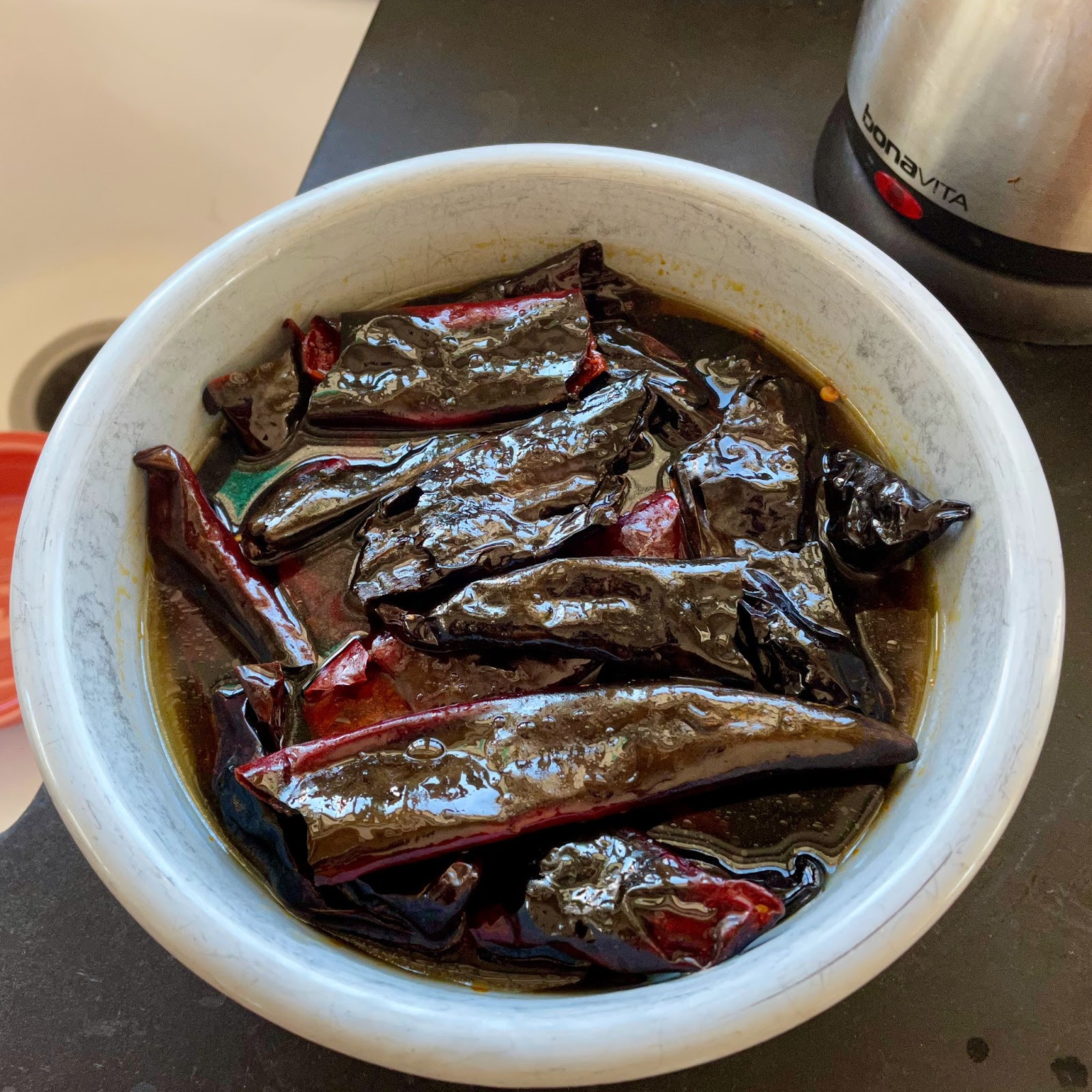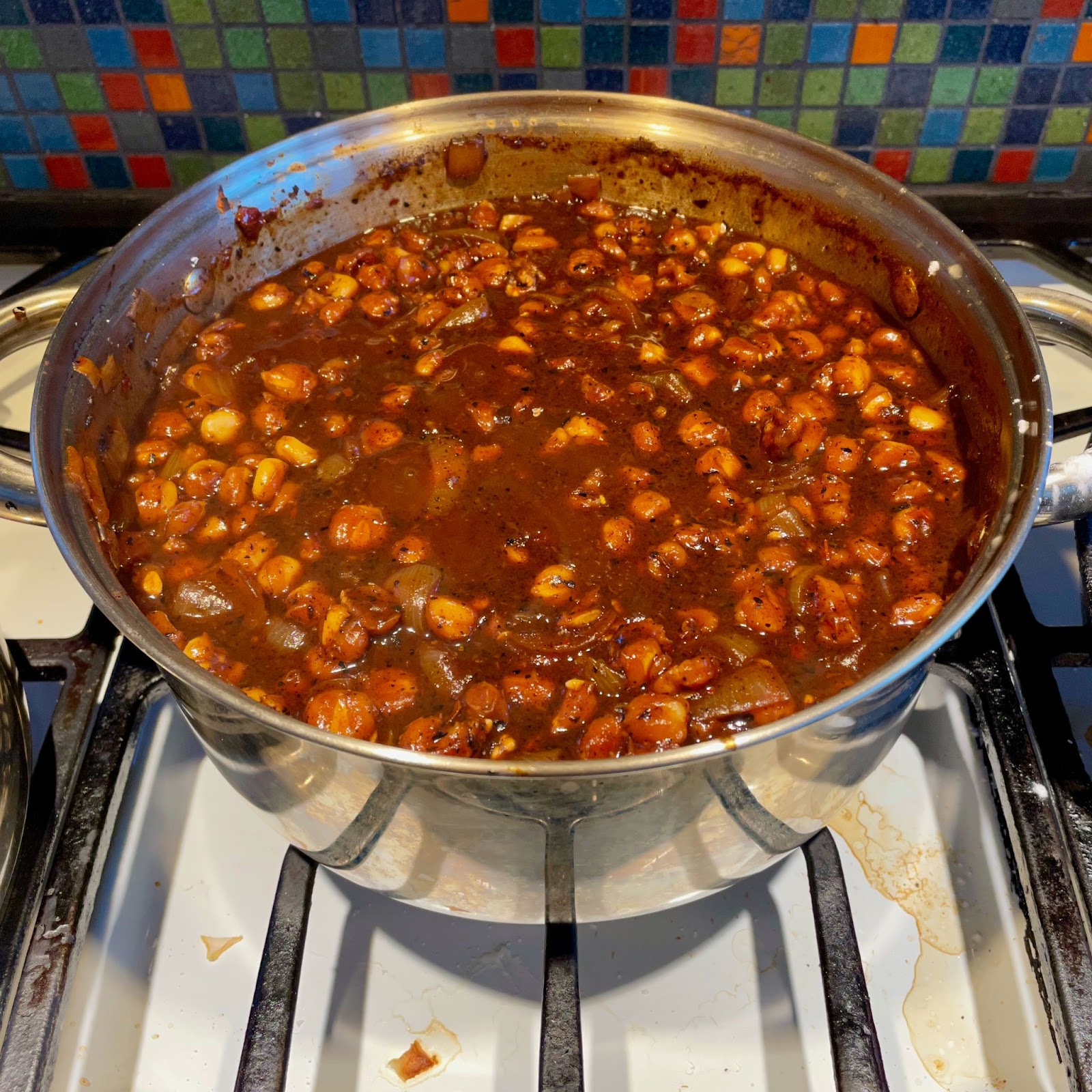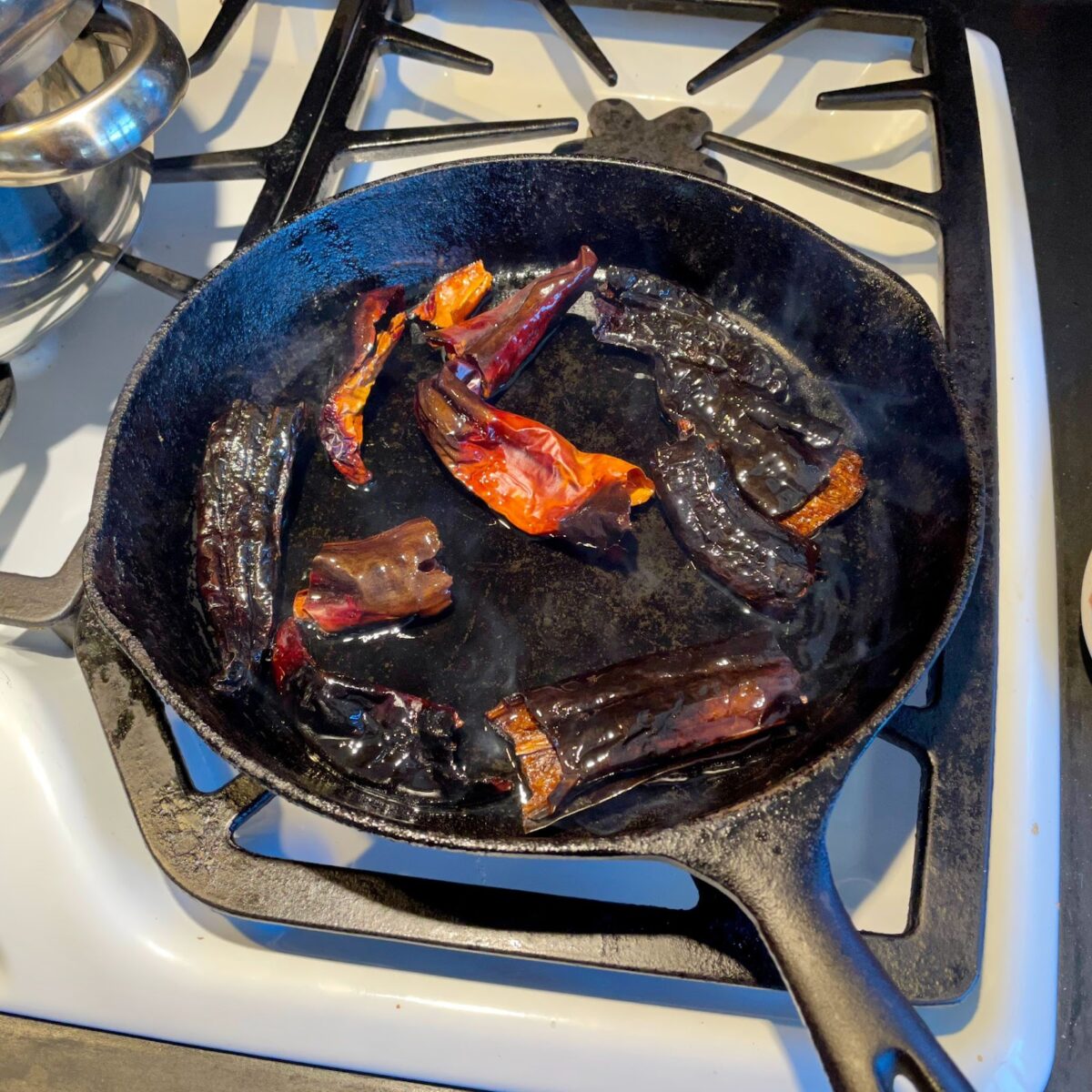Introduction
In previous installments of this series, we’ve talked about the benefits of freeze-drying food for backpacking: flavor, nutrition, convenience, and shelf-life. But every benefit has a cost, and now it’s time to talk about that also.
In this article, I hope to give you the information needed to decide whether to get into home freeze-drying yourself. I’ll break the costs into three components: food, operations, and capital costs.
Every decision requires an alternative, and I will use the most straight-up, obvious one: buying pre-packaged freeze-dried meals. We are all familiar with Mountain House. It is the market leader and a fine product, but there are plenty of alternatives.
With a diversity of suppliers comes a diversity of package sizes and serving definitions, complicating our analysis. We need to straighten that situation out first.
In our Archives: Catch up on the rest of Drew’s freeze-drying articles here:
- Harvest Right Home Freeze Dryer Review
- Freeze-Drying Your Own Backpacking Meals: How to Eat Your Favorite Town Food on the Trail
- How Does Freeze-Drying Work? (The Physics of Making Freeze-Dried Backpacking Food)
- Why Freeze-Dried Food Retains Taste and Nutrition
- Why is it Hard to Freeze-Dry Liquids?
- How to Store Freeze-Dried Food
Food costs
Over the years, I’ve found that a Mountain House two-serving package is just about right for one dinner for one backpacker (me). They define a serving as 2 ounces (55 g).
I’ve also found that 3.5 to 4.2 ounces (100 to 120 g) of food that I’ve freeze-dried constitutes a good dinner. So that checks out. We’ll call 4 ounces (110 g) a meal and use that as a base unit.
The exact number doesn’t matter so long as we are consistent.
The table below summarizes package sizes and costs from a variety of freeze-dried food suppliers, including a number of cottage outfits:
| brand | meal | cost/package | grams/package | cost/4 ounce meal |
|---|---|---|---|---|
| Mountain House | Classic Beef Stroganoff | $15 | 165 | $10 |
| Mountain House | Pasta Primavera | $9 | 108 | $9.42 |
| Backpacker's Panry | Pad Thai | $10 | 176 | $6.22 |
| Trailtopia | Pesto Chicken Pasta | $11 | 196 | $6.17 |
| Pinnacle | Sticky Teriyaki Chicken | $16 | 122 | $14.43 |
| Good to Go | Mushroom Risotto | $14 | 180 | $8.71 |
| Food for the Sole | Coconut Rice and Beans | $15 | 146 | $11.26 |
| Farm to Summit | Garden Mac and Cheese | $13 | 170 | $8.73 |
| PackitGourmet | Austintacious Tortilla Soup | $13 | 99 | $14.44 |
Averaged together, costs look like this:
| meal type | average amount of food per package | average cost per 4-ounce ( 110 g) meal |
|---|---|---|
| omnivore | 5.3 ounces (151 g) | $9.93 |
| vegetarian | 5.1 ounches (147 g) | $9.80 |
I’ve broken out the average cost per meal for all meals listed (omnivore) and for just the vegetarian meals. The reason why will soon become apparent. The most surprising pattern in this table is that there is no pattern. The big dog Mountain House is not cheaper than the little guys, and vegetarian meals are not necessarily cheaper than meals containing chicken or beef.
We can also break costs out by calories rather than weight. The FDA recommends a daily intake of 2000-2400 calories/day for active women and 2600-3200 for active men (but see Backpacking Light’s How much food should I pack? article). Let’s call 500 calories a meal, as most backpackers snack several times a day on high-calorie foods like nuts and chocolate, and energy bars. That calorie level gives us these results:
| brand | meal | cost/package | calories/package | cost/500 calorie meal |
|---|---|---|---|---|
| Mountain House | Classic Beef Stroganoff | $15 | 750 | $10 |
| Mountain House | Pasta Primavera | $9 | 440 | $10.51 |
| Backpacker's Panry | Pad Thai | $10 | 730 | $6.82 |
| Trailtopia | Pesto Chicken Pasta | $11 | 740 | $7.43 |
| Pinnacle | Sticky Teriyaki Chicken | $16 | 700 | $11.43 |
| Good to Go | Mushroom Risotto | $14 | 820 | $6.89 |
| Food for the Sole | Coconut Rice and Beans | $15 | 670 | $11.16 |
| Farm to Summit | Garden Mac and Cheese | $13 | 850 | $7.94 |
| PackitGourmet | Austintacious Tortilla Soup | $13 | 370 | $17.57 |
Averaged together, costs look like this:
| meal type | average calories per package | average cost per 500 calorie meal |
|---|---|---|
| omnivore | 674 | $10.17 |
| vegetarian | 630 | $10.45 |
These tables set our baseline: it costs about $10 per meal for store-bought freeze-dried food, probably more like $11 if you account for taxes and shipping. But $10 is a nice round number, so we’ll go with that.
To estimate the food portion of the cost of making your own freeze-dried food, I looked up the prices of a number of staples at the local Whole Foods. This gives us an estimate that is at the high end:
| food | cost/pound | cost/110 g (dry) | cost/110 g (wet) |
|---|---|---|---|
| beef - top sirlion | $12 | $2.91 | $8.72 |
| chicken breast | $8 | $1.94 | $5.81 |
| pasta | $1.39 | $0.34 | |
| tomato | $2.29 | $.0.55 | $2.22 |
| beans | $1 | $0.24 | |
| corn | $1.50 | $0.36 | $1.45 |
| rice | $1.85 | $0.45 | |
| potato | $1.19 | $0.29 | $1.15 |
Averaged together, costs for dry weight look like this:
| meal type | average cost per 100 g of dry food |
|---|---|
| omnivore | $2.55 |
| vegetarian | $0.98 |
Most foods lose about 3/4ths of their weight when freeze-dried, so to get the dry weight of the wet foods, I divided by four and converted pounds to grams.
Unlike prepared meals, adding meat incurs a substantial food cost. Because the cost of eating vegetarian is so much lower, I will track omnivore and vegetarian costs separately.
Of course, we don’t eat plain meat and vegetables. There are additional food costs for spices, herbs, sauces, etc. So let’s round up the food costs per meal to $3.00 for omnivores and $1.25 for vegetarians.
An additional conclusion from this analysis is that food costs are a minor component of prepared meal costs. I assume the commercial preparers buy in bulk at a discount, so their food costs will be even lower than what I presented above.
Operational costs
After nearly a year of freeze-drying, I have identified only two operational costs: electricity and pump oil. A quart of pump oil cost me $16 at the local hardware store. I’m still on the first quart as it can be filtered and reused. Its cost is a few pennies per meal at most and not worth including in our calculations.
The other operational cost is electricity. This cost is a good deal less than I expected. I used a Kill A Watt P3 meter to track electric power usage on several runs, summarized below.
Power consumption varies with ambient temperature and load size, but 20 kWh per run seems like a good estimate. The national average cost per kWh is $0.104, giving us a cost of $2.03 per run for electricity.
The nominal max capacity of the HarvestRight Home Freeze-Dryer is 7 to 10 pounds (3.2 -to 4.5 kg). A typical run for me has been more like 6 to 7 lbs (3 kg). The yield of dried food from a 6-7 pound run is about 2 pounds (0.9 kg). At 4 ounces (110 g) per meal, that’s eight meals per run, using the same parameters as we used for packaged food. Electricity costs then work out to just about $0.25 per meal.
For omnivore meal costs, we are thus at $3.00 (food) + $0.25 (operations) = $3.25 per meal.
For vegetarians, it is $1.25 (food) + $0.25 (operations) = $1.50 per meal.
That’s a lot less than prepared meals, but we have not yet addressed the biggest and most problematic cost.
Capital costs
Food is cheap, electricity is cheap, but freeze-dryers are expensive. If they were not expensive, you probably already would have one.
The HarvestRight Home Freeze Dryer model I have been using (the medium one) currently lists for $2900, up about $300 from a year ago. Trays, pump, and shipping are included in this price.
From above, the average cost for food and operation is $3.25 per meal for omnivores and $1.50 for vegetarians. At $10.00/meal to buy, this means the capital costs have to get below $6.75 or $8.50 per meal, respectively, before one starts to save money.
The math is simple then: $2900/$6.75 = 430 omnivore meals, or $2900/$8.75 = 330 vegetarian meals. At eight meals per run, that translates to 54 and 41 runs, respectively.
I don’t think that’s a problem from an equipment lifetime standpoint. I have done about 50 runs in the last year (I seem to have become very popular with my backpacking friends), and the HarvestRight shows no signs of wear or malfunction. I would be surprised if it didn’t last at least a hundred runs and could see its mean time-to-failure being several hundred or even a thousand. Good-quality vacuum pumps and compressors (the only moving parts) will last for over a decade of heavy use.
So the affordability question comes down to your consumption level and time horizon. If you think that you (and the new friends you will acquire) will eat more than 300-400 freeze-dried meals in the next decade or so, then buying your own freeze-dryer is a reasonable choice.
There are plenty of other factors and scenarios that affect the desirability of becoming a freeze-dryer owner. But I hope you find these cost calculations useful in making a decision.
Freeze-dried recipe: posole
Posole is a classic Mexican stew made with hominy in adobo sauce. It is a bit involved to make, but it scales easily, so you don’t have to make it often. It has become one of my trail favorites, especially in cold weather.
For a roughly 2-quart batch, you’ll need about 6 ounces (170 g) of dried peppers and 4 15 oz (425 g) cans of hominy. Both are available at your local carneceria. For peppers, I recommend guajillos and anchos. Throw in some chipotles (smoked anchos) if you want a smoky flavor.
Start by searing the peppers. Cover the bottom of a cast iron skillet with oil, and heat it medium-high until it just begins to smoke. While it’s heating, break or cut off the tops of the peppers, removing the stems and seeds.

Lay the peppers in the hot oil, searing them until they turn brown (and not too black), about 20 seconds per side. Put them in a mixing bowl of warm water, cover with a dish (to press them under the water), and let them soak for about 20 minutes.

Pour the peppers and about half the water into a blender and whir it up very fine. Add more water if needed to get a good consistency. Rick Bayless (whose recipe I am adapting here) suggests straining through a cheesecloth, but I prefer a chunkier texture myself.
Cut up some white onion, drain the hominy, and add both ingredients to the adobo sauce. Sprinkle in some Mexican oregano to taste and simmer for a couple of hours.
Add pork or chicken if desired.

Radishes and cabbage are the traditional garnishes, but I usually top with dried flour tortillas strips and some cheese.
You can save some of the adobo sauce to dry separately. It makes an excellent sauce for other meals – adobo mac and cheese is a fantastic trail meal.
This recipe works for both freeze-drying and heat-assisted dehydration. The hominy doesn’t rehydrate as well if dehydrated and remains a bit chewy. It is still pretty darn good. Give posole a try if you are ready to move beyond burritos.
Learn More
Browse our curated recommendations in the Backpacking Light Gear Shop – a product research & discovery tool where you can find Member gear reviews, Gear Swap (used gear) listings, and more info about specific products recommended by our staff and members.
Gear Shop » Food Preparation and Packaging
Related Content
- Read more by Drew Smith.
- Don’t miss our podcast interview with Drew.
- For more actionable food storage tips, check out our Backpacking Food Trailhead.
DISCLOSURE (Updated April 9, 2024)
- Backpacking Light does not accept compensation or donated/discounted products in exchange for product mentions or placements in editorial coverage. Some (but not all) of the links in this review may be affiliate links. If you click on one of these links and visit one of our affiliate partners (usually a retailer site), and subsequently place an order with that retailer, we receive a commission on your entire order, which varies between 3% and 15% of the purchase price. Affiliate commissions represent less than 15% of Backpacking Light's gross revenue. More than 70% of our revenue comes from Membership Fees. So if you'd really like to support our work, don't buy gear you don't need - support our consumer advocacy work and become a Member instead. Learn more about affiliate commissions, influencer marketing, and our consumer advocacy work by reading our article Stop wasting money on gear.




Home › Forums › Is Buying a Home Freeze-Dryer Worth the Money?